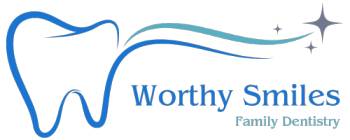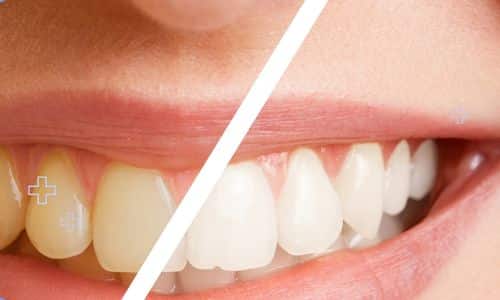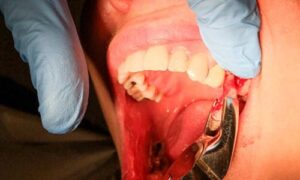Introduction
Good oral hygiene is essential for maintaining healthy teeth and gums and overall well-being. Dental care has come a long way, and many recent developments have occurred. This article will explore some of the latest trends and developments in dental care, including new technologies and treatments.
3D Printing in Dentistry
3D printing has become increasingly popular in dentistry, allowing dental appliances such as dentures, crowns, and bridges to be created. This technology allows for precise measurements and custom-fit devices, improving patient comfort and satisfaction.
Benefits of 3D Printing in Dentistry
3D printing in dentistry has several advantages, including increased accuracy, reduced treatment time, and improved outcomes. This technology allows for the creation of custom-fit appliances that fit the patient’s mouth perfectly, leading to enhanced comfort and functionality.
Examples of 3D Printing in Dentistry
Many examples of 3D printing in dentistry include creating orthodontic aligners, dental implants, and surgical guides. This technology has also made temporary crowns and bridges, allowing faster and more efficient treatment.
Laser Dentistry
Laser dentistry is another emerging trend in dental care, allowing for treating various dental conditions with minimal discomfort and downtime. This technology can be used for multiple procedures, including cavity removal, gum disease treatment, and teeth whitening.
Benefits of Laser Dentistry
The use of lasers in dentistry has several benefits, including reduced pain and discomfort, faster healing time, and improved precision. This technology allows for more precise treatment, improving outcomes and fewer complications.
Examples of Laser Dentistry
Laser dentistry has many applications, including gum disease treatment, cavity removal, and teeth whitening. This technology can also be used for cosmetic procedures, such as reshaping and contouring.
Dental Implants
Dental implants have become a popular alternative to traditional dentures and bridges, providing a permanent solution for missing teeth. This treatment involves the placement of a titanium implant into the jawbone, which serves as a base for a crown or bridge.
Benefits of Dental Implants
Dental implants have several benefits, including improved oral health, speech and eating abilities, and appearance. This treatment can also help prevent bone loss and preserve the jawbone’s structure.
New Developments in Dental Implants
There have been many recent developments in dental implant technology, including the use of computer-guided implant placement and the development of new materials for implants.
Orthodontic Advances
Orthodontics has come a long way in recent years, with many new technologies and treatments available for straightening teeth and correcting bite issues. Some of the latest advances in orthodontics include precise aligner therapy and self-ligating braces.
Benefits of Orthodontic Advances
New orthodontic technologies can provide several benefits, including improved aesthetics, comfort, and reduced treatment time. These treatments can also be more discreet than traditional braces, making them popular for adults.
Examples of Orthodontic Advances
Many examples of orthodontic advances include precise aligner therapy, self-ligating braces, and accelerated orthodontics. These treatments can be used to correct a variety of dental issues, including crowded or crooked teeth, over
Tele-dentistry
Tele-dentistry is a new trend allowing patients to receive dental care remotely without visiting a dental office. This technology uses video conferencing and digital tools to connect patients with dental professionals.
Benefits of Tele-dentistry
Tele-dentistry has several benefits, including increased access to care, reduced costs, and improved patient convenience. This technology can benefit patients who live in remote areas or have difficulty travelling to a dental office.
Examples of Tele-dentistry
Many examples of teledentistry include virtual consultations, remote monitoring of dental conditions, and teledentistry for orthodontic treatment. This technology has become increasingly popular in recent years, particularly in response to the COVID-19 pandemic.
Oral Cancer Screening
Oral cancer is a severe condition that can be difficult to detect in its early stages. However, several recent developments in oral cancer screening have occurred, including new technologies and diagnostic tools.
Benefits of Oral Cancer Screening
Early detection of oral cancer can improve treatment outcomes and increase the chances of a full recovery. Using new screening technologies can help identify cancer in its early stages when it is most treatable.
New Developments in Oral Cancer Screening
There have been many new developments in oral cancer screening, including using fluorescent light to detect abnormal tissues and developing new biomarkers for early detection.
Digital Impressions
Traditional dental impressions can be messy and uncomfortable for patients. However, new digital technologies have made it possible to create accurate images of a patient’s teeth and gums without the need for messy materials.
Benefits of Digital Impressions
Digital impressions have several benefits, including increased accuracy, reduced patient discomfort, and faster treatment times. This technology can also create more precise dental appliances like crowns and bridges.
Examples of Digital Impressions
There are many examples of digital impression technology, including intraoral scanners and digital impression systems. These technologies have become increasingly popular recently, particularly in cosmetic dentistry.
Sedation Dentistry
Sedation dentistry is a technique that is used to help patients relax during dental procedures. This technique can benefit patients with dental anxiety or who require lengthy or complex systems.
Benefits of Sedation Dentistry
Sedation dentistry has several benefits, including reduced patient anxiety and discomfort, improved cooperation during procedures, and faster treatment times. This technique can also be helpful for patients with physical or mental disabilities.
Types of Sedation Dentistry
Several types of sedation dentistry include nitrous oxide (laughing gas), oral sedation, and intravenous (IV) sedation. The type of sedation used will depend on the patient’s needs and the procedure being performed.
AI in Dentistry
Artificial intelligence (AI) rapidly develops in many industries, including healthcare. AI has several potential applications in dentistry, including improving diagnosis and treatment planning.
Benefits of AI in Dentistry
AI has several potential benefits for dentistry, including improved accuracy and efficiency, reduced treatment times, and improved patient outcomes. This technology can benefit complex procedures, such as dental implant placement.
Examples of AI in Dentistry
Many examples of AI in dentistry include:
- Computer-aided diagnosis and treatment planning.
- Automated analysis of dental images.
- Predictive modelling for treatment outcomes.
Personalized Dentistry
Personalized dentistry is an approach to dental care that considers each patient’s unique needs and preferences. This approach can lead to more effective and efficient dental treatments and improved patient satisfaction.
Benefits of Personalized Dentistry
Personalized dentistry has several benefits, including improved treatment outcomes, reduced treatment times, and increased patient satisfaction. This approach can also lead to more accurate diagnoses and effective treatment planning.
Examples of Personalized Dentistry
Many examples of personalized dentistry include:
- Using digital technologies to create customized dental restorations.
- Developing customized treatment plans based on a patient’s genetic information.
- Using patient feedback to improve treatment outcomes.
Minimally Invasive Dentistry
Minimally invasive dentistry is an approach to dental care that focuses on preserving as much of the natural tooth structure as possible. This approach can lead to more conservative and less invasive dental treatments.
Benefits of Minimally Invasive Dentistry
Minimally invasive dentistry has several benefits, including reduced pain and discomfort, faster healing times, and improved oral health. This approach can also lead to more affordable and less time-consuming treatments.
Examples of Minimally Invasive Dentistry
There are many examples of minimally invasive dentistry, including using air abrasion to remove decay without drilling, dental lasers to treat gum disease, and sealants to prevent tooth decay.
Conclusion
Dental care constantly evolves and develops, with new technologies and approaches always emerging. From teledentistry to AI in dentistry, these developments improve patient care and change how we think about dental health. By staying up-to-date with the latest developments in dental care, patients can ensure that they receive the best possible treatment and achieve the best possible outcomes.














